All about ruscus italian
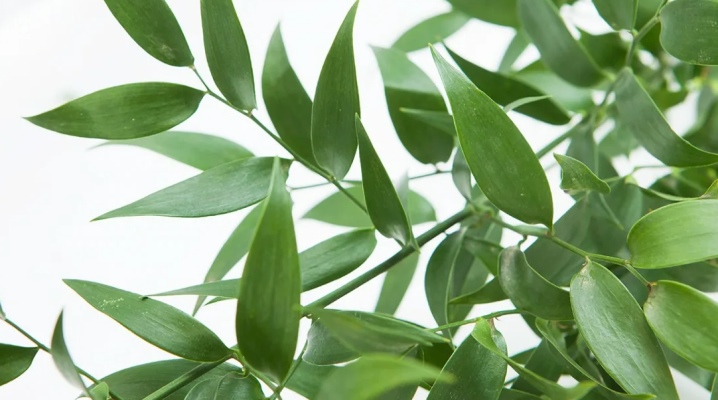
Italian Ruscus is a perennial plant. This is a shrub, the height of which is about 0.5 m. The second name of the plant is butcher.
Description
The flower has a creeping surface rhizome. Its shoots are covered with a dark green scaly crust with oblong grooves. Several branches extend from the base.
The leaves of this plant have an ovoid configuration. These are reduced shoots, which botanists call phylloclades. The leaves, alternately located on the stems, have practically no petioles, and the tips are covered with sharp thorns.
Flowers emerge from leaf blades and rise on small pedicels. Flowering occurs in April-May. Corolla up to 1 cm in diameter has a snow-white or purple hue. It gives a special charm to the plant. There are species that bloom in the winter.
Ruscus is a dioecious plant, its resistance to diseases and pests is quite high. A large number of signs and superstitions are associated with it. Even festive wreaths are made of it, which are then used to decorate doors. There are several types of butcher's broom, the most common among them: Colchis, Pontic, sublingual.
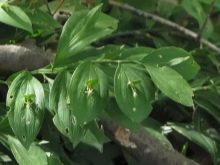

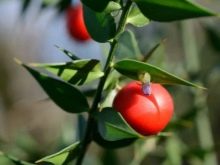
Landing
In order for the plant, whose homeland is Italy, to turn into a beautiful flower, it is recommended to plant it in the spring. This is the optimal time for transplants. Ruscus planted in spring will quickly take root in a new place.
If the plant is too tall, replanting becomes a necessity. The pot should be selected according to its size. Those who do not want the bush to be too fluffy should choose a narrow container.
Avoid stagnation of water during irrigation, the bottom layer is preferably made of drainage. Top dressing is applied every 20 days. When planting a flower, a loose substrate is used, which includes turf, sand and three parts of leafy soil.
It is recommended to pour expanded clay drainage or fragments of red brick at the bottom of the pot. Experienced flower growers try to use ready-made potting mixes, they can be purchased at any gardening store.

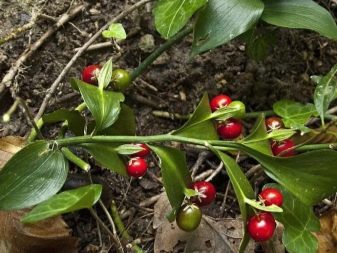
Care
It doesn't take much effort to grow Italian Ruscus. Even inexperienced growers can do the cultivation of this plant. Butchery quickly adapts to new conditions. But improper care can cause the lack of flowering and fruit.
Ruscus should not be left indoors, outdoors or on a balcony. The temperature can drop to + 13 ... 15 degrees. A larger drop will harm the flower. This plant likes long daylight hours. The container with ruscus should be located at some distance from the glass so that the direct rays of the sun do not lead to burns on its leaves.
In January, it is recommended to keep the ruscus on a south-facing window, or use additional artificial lighting. The soil must be moistened as the top layer dries up by 3-4 cm.

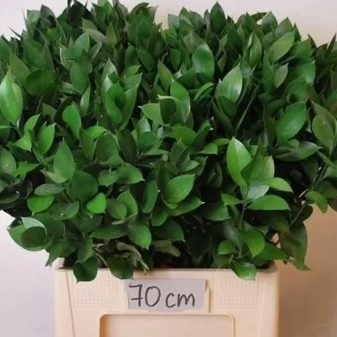
During the period when new shoots appear, watering should be more frequent. Spray the leaves regularly. In spring and summer, foliage should be wiped with a damp cotton pad from time to time.
As for the air humidity, it should be medium. In hot and dry weather, a glass filled with water is placed next to the pot. In the period from April to October, the plant is fed with mineral fertilizers. The mixture is introduced into the soil. In winter, the plant does not need feeding.
At the end of autumn, Ruscus goes into hibernation, it is irrigated as needed, but no more than once a week. With the arrival of spring, they carry out a transplant, begin to make top dressing.
As for pruning, the ruscus greens do not need special adjustments. To give the flower a perfect look, it is enough to remove the yellowed branches. There are gardeners who carry out pruning, in this way they give the plant a certain shape.
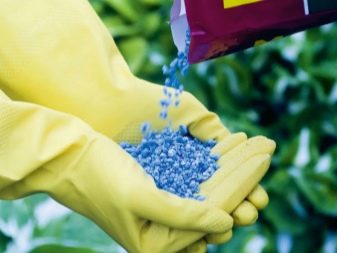
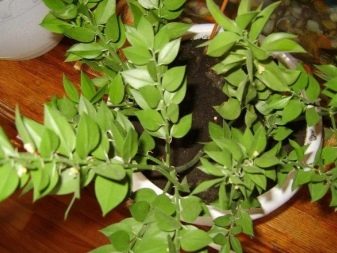
Reproduction
Ruscus can be propagated in three ways:
-
seeds;
-
dividing the bushes;
-
a sprig from a bouquet.
Young, viable shrubs can be obtained in any of these ways. There are gardeners who prefer cuttings. For this, you can use any twig or young shoot.
To speed up the process, the seeds are wrapped in a damp cloth and kept in the refrigerator for 7 days. After that, they are sown in boxes filled with a peat-sand mixture.
Crops should be covered with soil no more than 1 cm. The containers are covered with polyethylene and kept in a room with a stable temperature. Every day they ventilate and irrigate from time to time. To moisten the crops, drainage holes should be created in the pan - this will reduce the likelihood of liquid stagnation and root rot.
If you follow all the planting rules, you should wait for the first shoots after 14-20 days.
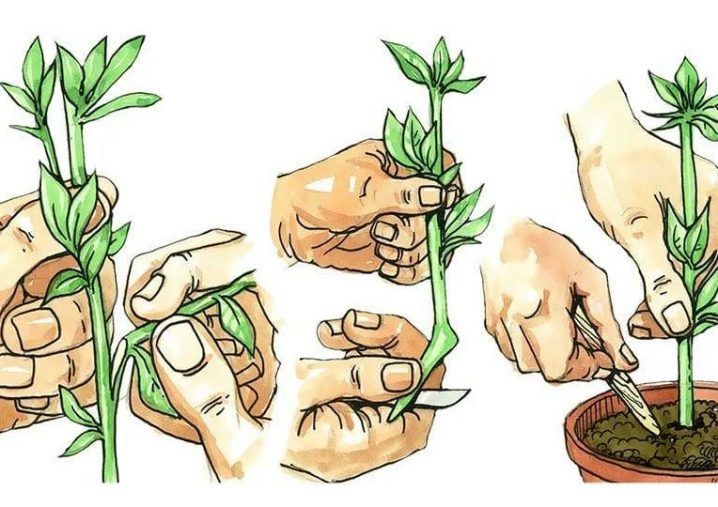
By dividing the bush, Ruscus is propagated in the spring, before its active development begins.
-
The plant is carefully removed from the pot, the roots are cleaned from the ground.
-
Rhizomes are divided so that phylloclades are present in each new shrub.
-
Young plants are placed in pots filled with soil previously disinfected with activated or charcoal.
Another possible way of propagation of Ruscus is with a branch from a bouquet. Cut it into cuttings, and treat the places of the cuts with a preparation that stimulates the growth of roots (it is enough to hold it for 1-2 hours).
Plant the cuttings in nutrient soil and cover with a glass jar. Irrigate through the pan twice a week. After the first leaves appear, remove the glass container and continue caring for the plant as for ordinary indoor flowers.
Italian Ruscus is easy to grow at home. Follow all the care instructions, and he will definitely delight with flowering. But even without flowers, it looks very original.

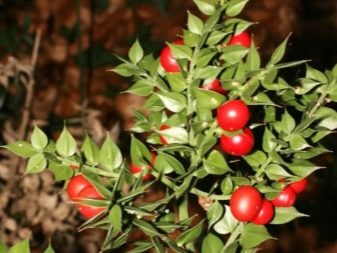













The comment was sent successfully.